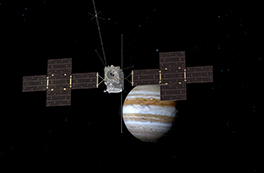07.06.2025, 10:30 / 14:00 | Public event. Build a comet and moonwalk with space researchers
 © ESA
© ESA
From the moon to comets: Take a walk!
Ready to examine a comet up close, and explore the moon? Join researchers from ISAS/JAXA, the University of Tokyo, Kyoto Sangyo University and the University of Bern on a journey to these small worlds through talks (and your questions), workshop and demonstrations. With the Swiss and Japanese members of the Comet Interceptor mission, build a comet right in the Pavilion, and discover the similarities between comets and soy sauce! Then see the tiny SORA-Q lunar rover in action, and experience the moon in virtual reality. Find us at the Swiss Pavilion at EXPO 2025 Osaka on 7th of June 2025.
月から彗星へ、宇宙をおさんぽ!
~彗星づくりと月面歩行を体験しよう!宇宙研究者と一緒に学ぼう~
彗星を間近で観察し、月を探る準備をしよう!JAXA宇宙科学研究所、東京大学、京都産業大学、ベルン大学の研究者たちと一緒に、トーク(質問も受け付けます)、ワークショップ、デモンストレーションを通じて、これらの新たな世界を冒険しましょう。スイスと日本のコメット・インターセプターのメンバーと一緒に、パビリオン内で彗星を作り、彗星と醤油の共通点を発見しよう!変形型月面ロボットSORA-Qを操作したり、VRで月面を体験しましょう!2025年6月7日、EXPO 2025大阪・関西万博のスイスパビリオンでお待ちしています。